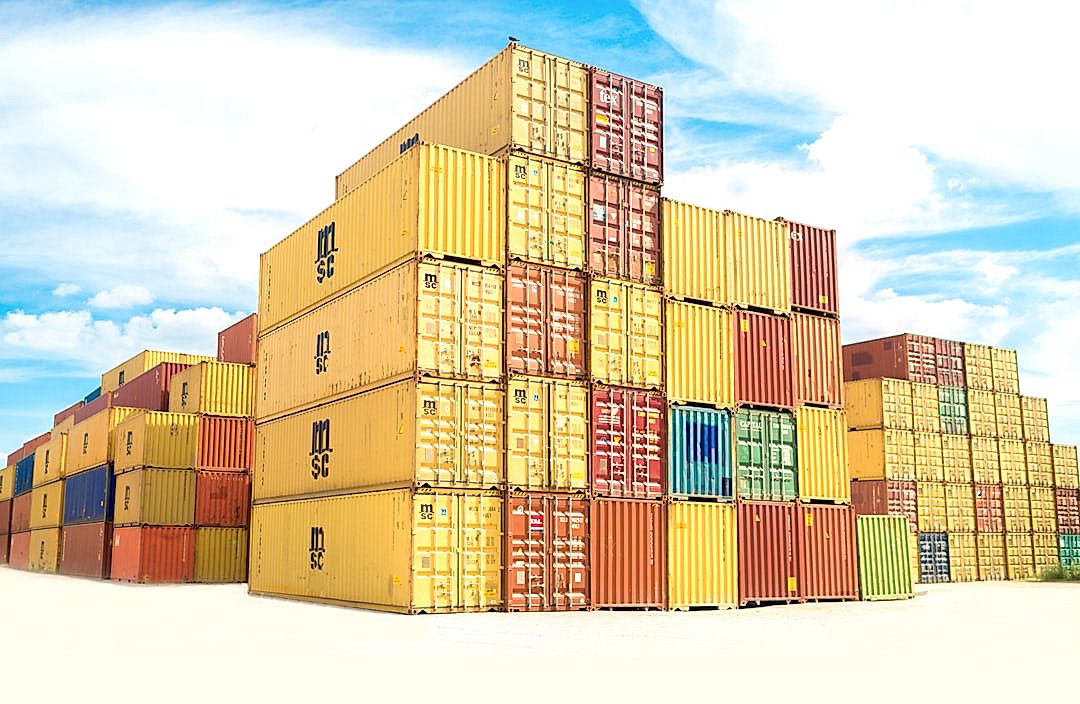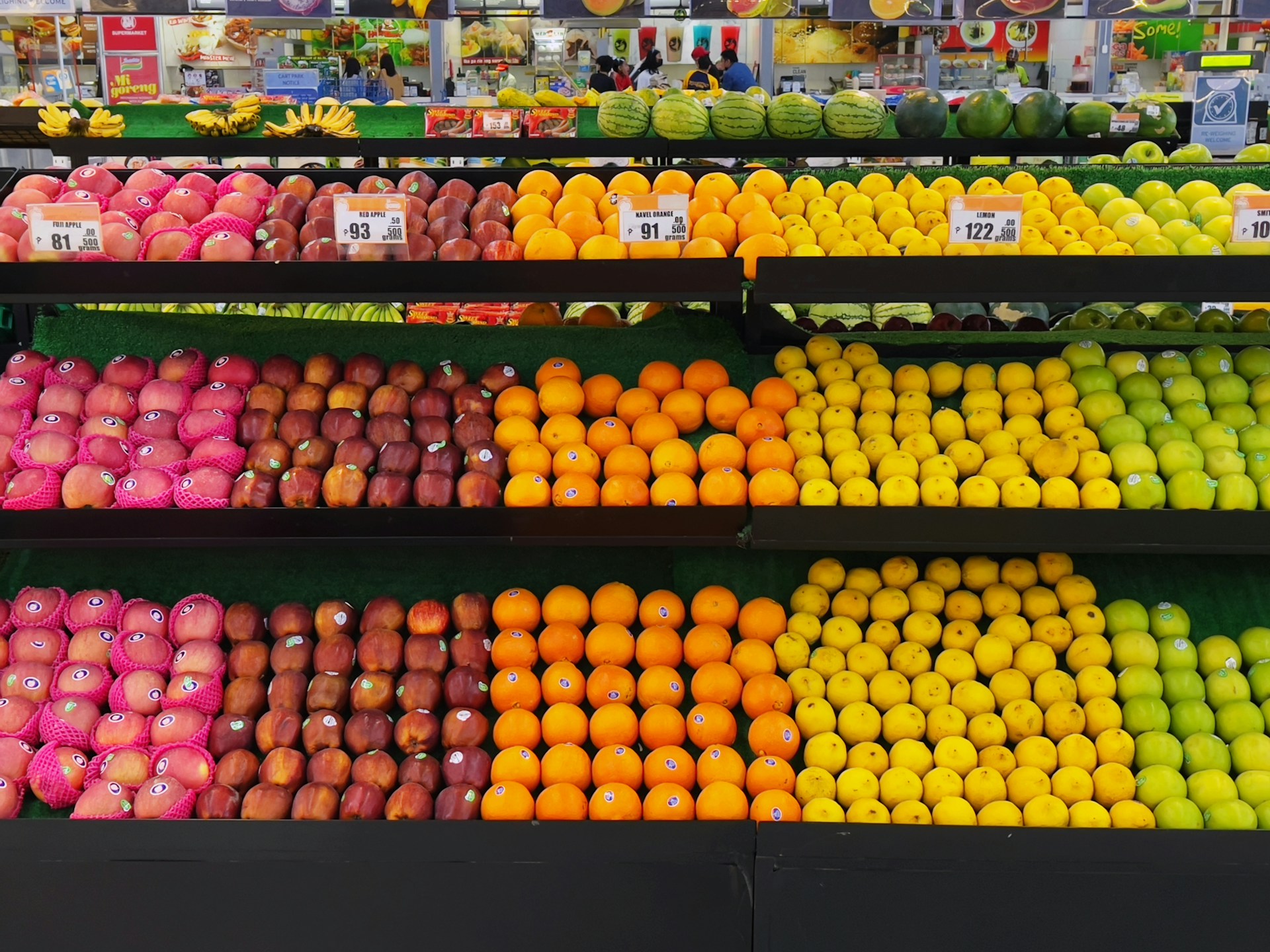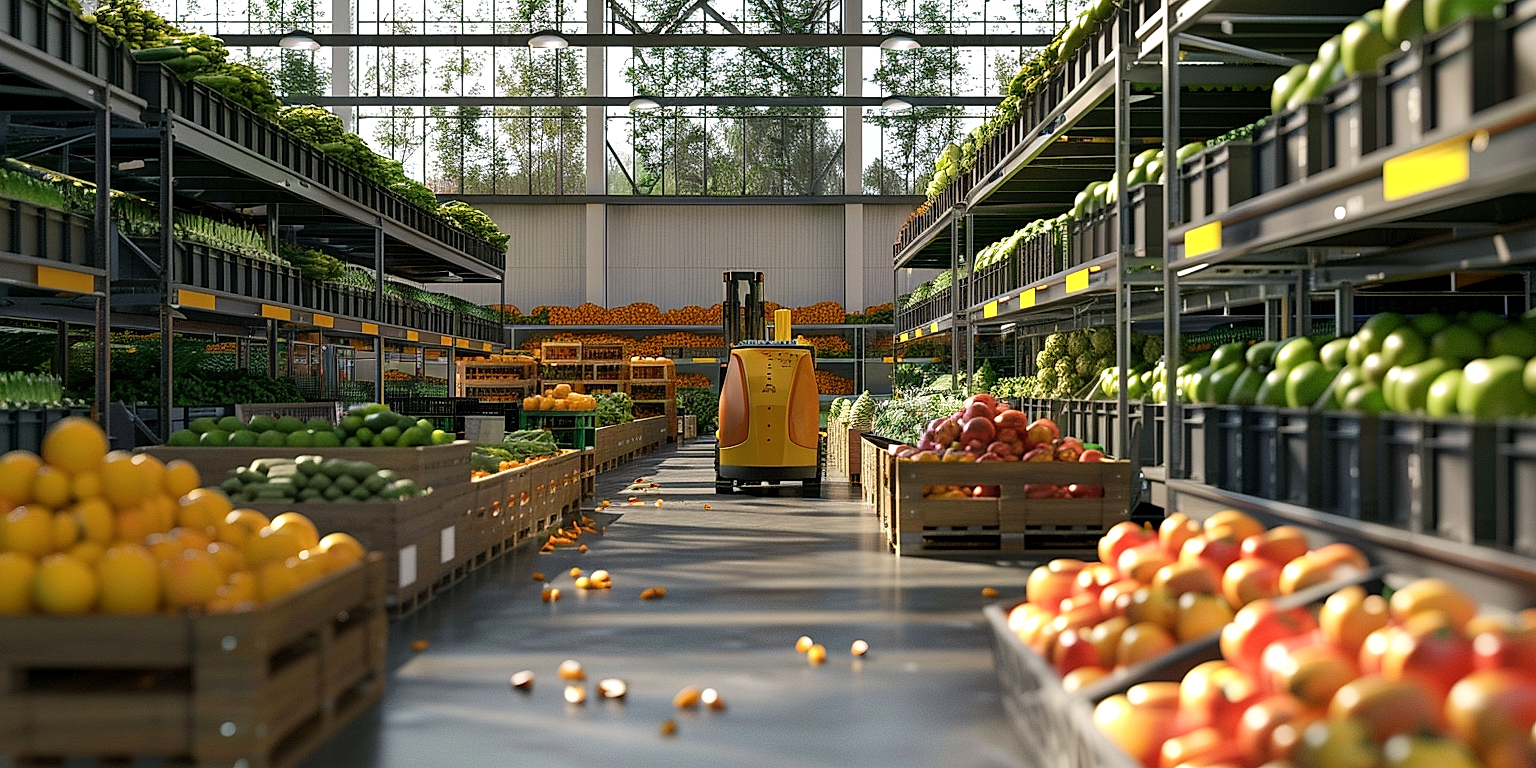Understanding the complex nuances of international logistics is paramount for the smooth functioning of produce distribution businesses.
Mastery of the key factors influencing this process can significantly add to the success of your distribution chain.
In the globalized world, efficiently moving goods across borders requires thorough planning, strategic partnerships, and a deep understanding of regulatory nuances.
This not only ensures a robust supply chain but also gives your company a competitive edge.
However, the challenges are manifold, from weather disruptions to custom procedures.
This blog endeavors to shed light on how you can navigate these challenges strategically and effectively.
Contents
- Keys To Successful International Logistics For Produce Distribution
- 1. Efficient Supply Chain Management
- 2. Comprehension of International Regulations
- 3. Robust Inventory Management Systems
- 4. Reliable Distribution and Transportation Networks
- 5. Effective Quality Control Measures
- 6. Strong Vendor and Partnership Relations
- 7. Advanced Technology for Tracking and Communication
- The Bottom Line
Keys To Successful International Logistics For Produce Distribution
1. Efficient Supply Chain Management
An efficient supply chain management is paramount in successful international logistics for produce distribution.
It is an operational strategy which entails integrating all facets of the logistics process from farming to distribution to end customers.
The effectiveness and efficiency of supply chain management dictate the timeliness, condition, and cost of getting produce from the farm to the market in a different country.
High-quality logistics is inherently dependent on the smooth functioning of the supply chain.
Efficient supply chain management is about more than merely moving goods from one point to another – it seeks to facilitate the flow of information, products, and finances to add value to the product cycle and make sure produce gets there in the best quality possible.
With efficient supply chain management, companies can minimize losses due to spoilage during transportation, reduce storage costs, and achieve faster delivery times.
This directly benefits consumers by ensuring the availability of fresh produce in markets around the world.
In regards to globalization, it plays a crucial role in allowing businesses to compete internationally by lowering costs and increasing efficiency.
In successful international logistics, strategic planning is an essential component of efficient supply chain management.
Planning should consider key elements such as inventory levels, logistics providers, transport routes, and the selection of appropriate modes of transport to ensure smooth production and distribution processes.
Frequent review and evaluation of supply chain activities are also necessary in order to identify areas for improvement and optimization.
With effective supply chain management, businesses can leverage their competitive advantage by delivering fresh and high-quality produce to different parts of the world.
Furthermore, it allows companies to optimize end-to-end supply chain performance by attending to every detail, virtually eliminating chances of logistical missteps.
Therefore, for businesses looking to succeed in international produce distribution, highly effective and efficient supply chain management is key.
Ultimately, without an efficient supply chain, even the most exceptional quality of fresh produce can lose its value in the eyes of consumers due to ineffective shipping or poor adherence to health and safety requirements.
The bottom-line is, successful international logistics for produce distribution starts with efficient supply chain management.
2. Comprehension of International Regulations
Comprehending international regulations is key to the successful distribution of produce on a global scale.
These regulations often involve agricultural certification standards, import and export regulations, and international trade agreements.
Understanding and complying with such regulations is essential for smoothly running international logistics operations.
They ensure that all produce is transported and distributed in the appropriate manner, minimizing the potential for rejects, returned shipments, and fines.
Furthermore, each country has its own unique set of regulations pertaining to the import and export of agricultural produce, and a comprehensive understanding of these enables distributors to avoid potential pitfalls, legal challenges, or interruptions to their supply chain.
For example, certain countries have strict quarantine procedures for fruit and vegetables to prevent the importation of pests and diseases.
Being aware of these regulations ensures that preparations can be made well in advance and distribution can be seamlessly executed.
Additionally, distributors need to keep ahead of changing regulations and trade agreements as they can affect the flow of produce from one country to another.
Regular check-ups and trainings for updates in regulations can help ensure compliance and efficiency of produce distribution.
Comprehension also assists in developing strategic relationships and partnerships at both ends of the supply chain.
In-depth knowledge of international regulations equips distributors with the information to negotiate better contracts, ensuring higher profits and lower risks.
Logistics providers can also offer guidance in this area, further enriching the distributors’ comprehension of regulations and benefiting their operations.
Failing to comprehend international regulations can result in costly fines, unnecessary delays, rejected shipments, and even a halt to operations.
Overall, a strong understanding of international regulations is one of the critical steps toward a successful and efficient produce distribution and increases credibility among partners and customers.
It is a continuous process, as international regulations are complex and change frequently, but the benefits far outweigh the effort involved in comprehending them.
3. Robust Inventory Management Systems
In the domain of international logistics for successful produce distribution, a robust inventory management system is a crucial ingredient.
This system offers the means of tracking products from the point of origin through to the ultimate point of consumption, ensuring optimum control (and hence efficiency), mitigating waste, and enhancing overall supply chain performance.
Particularly for fresh produce, a robust inventory management system enables real-time insights into stock levels, promoting dynamic inventory management based on changing demand patterns.
A robust inventory management system is not just about maintaining a ledger of stock levels, but rather providing a comprehensive system that facilitates supply-demand balancing, reducing waste, improving turnaround times, and increasing overall operational efficiency.
The intricate functionality of such systems supports the planning and forecasting needs of an enterprise, using predictive analytics to improve accuracy and support data-driven decisions.
For transporters, farmers, suppliers, and retailers alike, this data-driven approach transforms what is otherwise an overwhelming tangle of data into clean, actionable insights.
Moreover, a sophisticated inventory management system reduces the risk of spoilage and waste – notoriously high in the produce industry – by efficiently managing inventory with the use of First-In-First-Out (FIFO) algorithms.
The utility of comprehensive inventory management extends to recalls, facilitating rapid and accurate trace back of products when needed.
Equally, these systems help to forecast demand, enabling businesses to prepare for peak periods, stocking up in advance or rerouting stock as required.
These functionalities increase the overall efficiency and profitability of the entire supply chain system.
International logistics teams need to have a strong understanding of the functionality and appropriate use of these systems, in order to leverage their myriad benefits.
Choosing an inventory management system that provides versatility to cope with differing regulations, languages, customs, and currencies also plays a vital role when dealing with international logistics.
With robust systems in place, real-time updates regarding inventory can be communicated instantly, aiding in accomplishing tasks effectively and in a timely manner.
To truly utilize an inventory management system, there is a need for adequate training and education among all stakeholders, fostering accuracy and efficiency.
Investing in a robust inventory management system brings numerous returns in terms of efficient operations, waste reduction, improved turnaround times and overall supply chain performance.
4. Reliable Distribution and Transportation Networks
The very backbone of successful international logistics for produce distribution is reliant upon efficient and reliable transportation networks.
With produce being a time-sensitive commodity, it is fundamentally important to ensure that distribution is swift, smooth and free of any delays.
This can only be achieved by having a reliable distribution network in place.
Establishing a strong, dependable network entails collaborating with top-tier shipping partners, carriers and logistics providers who can ensure the timely delivery of produce.
It is essential to leverage reliable modes of transportation that are equipped with advanced technology to maintain the freshness and quality of produce during transit.
The ability to track and trace freight during its journey allows companies to monitor the supply chain in real-time and react to any potential setbacks in a timely manner.
Thus, a well-structured transportation system drastically reduces the likelihood of product spoilage and wastage, fortifying the overall efficiency and productivity of the international logistics operation.
Furthermore, automated logistics solutions can significantly enhance the efficiency of transportation networks.
These modern tools can constantly feed companies with real-time data and analytics, providing valuable insight into the performance of their distribution networks, and facilitating quick decision-making.
Logistics automation also allows for precise planning and execution of dynamic distribution strategies.
Produce companies can use this data to optimise their transportation routes, thereby improving delivery speed, reducing fuel costs and minimising their carbon footprint.
Implementing reverse logistics processes is another key aspect of managing a reliable distribution network.
This approach helps companies to effectively manage product returns, recalls, and waste from expired or damaged produce.
Investing in cold chain logistics is also highly recommended to maintain the quality and shelf life of produce during distribution.
These systems provide temperature-controlled transportation, ensuring that the produce retains its freshness from farm to store.
Network reliability is also heavily reliant on having a strong backup plan.
Logistics teams must be prepared with a contingency plan to tackle unforeseen circumstances, which could otherwise throw the entire logistics operation off course.
Lastly, a reliable distribution network is not just about having the right resources and technology – it also requires competent professionals who can ensure that the logistics long chain operates seamlessly and efficiently.
5. Effective Quality Control Measures
Ensuring adequate quality control measures plays a critical role in international logistics, particularly in fresh produce distribution.
Innovative methodologies and strategies need to be implemented, providing consistent quality at every stage of the supply chain.
The freshness, taste, and appearance of products are paramount to customer satisfaction and trust.
Consequently, strict quality checks must be conducted from the initial processing stage to the final product delivery.
Microbiological tests, residue analysis, and sensory evaluation are vital in ensuring the food safety and high-quality standards of produce.
Integrating information technology tools can offer real-time monitoring and traceability, facilitating regular quality audits.
Companies also need to balance quality control measures with cost-efficiencies to remain competitive in the global market.
Training programs for staff involved in handling, packaging, and dispatching are elemental for maintaining and promoting quality standards.
Also, suppliers and partnerships should be orchestrated based on their ability to adhere to firm’s quality requirements.
Periodic supplier inspections and assessment are elemental to ensure continued compliance with quality standards.
Moreover, compliance with international quality certifications, such as ISO, HACCP, and other relevant certifications, enhances business credibility.
Consumer concerns, economic risks, and legal implications involved in the distribution of fresh produce insist on a rigorous approach to quality control.
The implementation of such measures also helps in risk mitigation and ensures business continuity.
Building a culture of quality across the organization with training programs and awareness campaigns significantly contributes to successful logistics operations.
In essence, quality control measures lay the foundation for reliable and sustainable produce distribution in international logistics.
Ultimately, effective quality control measures are a key component of successful international produce distribution.
6. Strong Vendor and Partnership Relations
Establishing strong vendor and partnership relations forms the backbone of successful international logistics in produce distribution.
Vendors and partners play a key role in smooth supply chain operations, particularly in the transnational distribution of perishable goods.
They provide the necessary resources, services, and infrastructure support to transport the goods efficiently and within the stipulated timeline.
Firms must strive to build good relationships with their partners and vendors to ensure seamless operations.
Moreover, winning the trust of vendors and partners aids in navigating unexpected logistical challenges, leveraging their expertise and resources.
Understanding the local regulations, supply chain procedures, and the area’s market dynamics is easier with the help of reliable partners.
Companies must also focus on building relationships based on mutual trust and transparency.
Such a relationship not only fosters better communication and understanding but also engenders loyalty, which can be beneficial during a crisis situation.
Partners and vendors who feel valued are likely to go the extra mile in ensuring the timely and safe delivery of your goods.
Prompt payments, open communication, and fairness in dealings can strengthen these relationships.
Firms should make sure that they are conducting regular performance checks and assessments.
Such assessments ensure that all vendors and partners are upholding the expected standards of service, which is crucial in the international logistics of produce distribution.
Periodic reviews open avenues for improvement and provide opportunities to recognize and reward the consistent performers.
Notably, these relationships are not built overnight and require consistent efforts and a range of negotiations.
In light of this, it’s advisable for companies to choose their vendors and partners carefully and invest time and resources in fostering long-lasting and profitable relationships.
By retaining partners and vendors who appreciate your business values, you’re more likely to experience success in international logistics for produce distribution.
7. Advanced Technology for Tracking and Communication
There’s no denying that advanced technology has been a game-changer in the realm of international logistics for produce distribution.
Real-time tracking and communication tools have ushered in an era of unprecedented transparency and efficiency.
Leveraging technology allows businesses to closely monitor the movement of their goods from one point to another.
Today, companies can pinpoint the exact location of their produce in transit, thanks to advancements in technology.
Furthermore, these technological arms aid in resolving any unforeseen issues that could potentially lead to delivery bottlenecks.
In essence, the use of technology in international logistics doesn’t just offer better visibility, but it also paves the way for more efficient and accurate order fulfilment.
Another domain where technology has provided significant benefits is communication with vendors and partners.
From quick messages to video calls and emails, businesses can maintain end-to-end communication with their stakeholders at all times.
This constant touchpoint helps in ensuring that everyone is on the same page and any concerns can be promptly dealt with.
Another aspect to consider is that customer expectations are constantly evolving.
To stay competitive, businesses need to provide their customers with real-time updates regarding their orders.
Modern tracking technology enables businesses to deliver this level of service, enhancing customer satisfaction and brand reputation.
In addition to tracking and communication, technology also plays a pivotal role in managing warehouses and inventories.
Innovative warehouse management systems (WMS) and inventory management solutions allow businesses to manage their stocks more effectively, reduce wastage, and improve efficiency.
All these advantages wrapped together make technology an indispensable part of international logistics for produce distribution.
Thus, it’s safe to say that adopting advanced technology for tracking and communication is a key to successful international logistics for produce distribution.
The Bottom Line
sentences.
Undoubtedly, a robust supply chain operation pivots on efficiency, sound knowledge of international regulations, innovative inventory management, reliable distribution networks, stringent quality controls, influential vendor partnerships, and advanced tracking technology.
This blend of elements not only increases a business’s productivity but also significantly curbs unnecessary costs, ensuring profitability in a fluctuating market environment.
Additionally, it sets the stage for sustainable business operations, enabling companies to better adapt to changing market trends and customer demands.
Therefore, incorporating these key aspects is vital in a company’s pursuit towards attaining a competitive edge in the global market arena.




